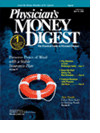Publication
Article
Physician's Money Digest
Discover the Advantages of Small Funds
Author(s):
New York Times
Who says bigger is better? Not BernardKlawans, who has been managing theValley Forge mutual fund since 1972—most recently from his home in suburbanPennsylvania. According to a report, the Valley Forge fund has about $8.7 million inassets, a drop in the bucket compared with some of thebehemoths that manage funds in the billions. The fundhas averaged returns of 5.5% a year for the pastdecade, and has only lost money in 3 of the past 30years. And according to Klawans, an 82-year-old formerGeneral Electric aerospace engineer, it's a conservativefund that allows investors to sleep at night.
Small Fund Benefits
Smaller funds do offer some advantages. Forexample, unlike larger funds, the trades made bysmall funds do not affect the price of stocks they own.And being small may enable these funds to invest inonly their managers' best bets.
Times
However, the article notes that some studieshave shown that, on average, small funds perform nobetter than large ones. A study by Lipper Inc indicatesthat the returns of smaller funds vary more widely. Asan example, Andrew Clark, a senior research analystfor Lipper, explains that the best performing fund everyyear is a small one, but so is the worst performing fund.
Perhaps the most significant challenge small fundsface is covering their expenses, especially during theirearly days. That's because the expenses are spread overa small asset base. According to Morningstar, smallfunds have an average expense ratio of 1.81%, comparedwith 1.57% for all stock and balanced funds.
Times
According to the article, a typical fund'sexpenses include fees for a custodian for the shareholders'money, a transfer agent, a lawyer, an auditor,and trustees, as well as a range of administrative costs.If you include a management fee, some analystsbelieve a small fund has to grow to at least $25 millionto make ends meet.
Despite managing assets only one third of thoseamounts, Klawans has persevered. He says that hecovers his expenses and still manages to take a managementfee equal to 1% of assets, or about $86,000annually. He keeps costs at a minimum by doing a lotof the work himself, and says his fund's fees averagearound $25,000 to $30,000 a year. Last October,Morningstar pegged his fund's expense ratio at animpressive 1.26%.
Hidden Solid Performers
A willingness to do some research, analysts say, isthe key to finding smaller funds that might be worth alook or two. Some funds are small due to poor performance.The Times article notes that others, like the VanWagoner Technology fund, were once very large andsuccessful before faltering. Other funds that havealways been solid performers simply have not yetcaught investors' attention. In fact, Morningstar's highestfive-star rating is afforded to 39 stock and balancedfunds that have less than $50 million in assets.
Times
One of them, according to the article, isAdhia Twenty, which, not coincidentally, holds nomore than 20 stocks. It is a large cap fund started 4years ago by John Adhia, an accountant by background.Adhia, who runs the fund, believes that 20stocks are enough to keep you focused and diversifiedwithout diluting your returns. He currently takes nomanagement fee, subsidizing the fund's operations, inpart, with money he made on a previous business venture.The fund's expense ratio is 1.38%.
Bigger is better? Not necessarily, but it's not a foregoneconclusion that smaller is better, either. Rather,small funds are a viable investment option. But, like anythingelse, physicians must do their homework to makesound investment decisions.
